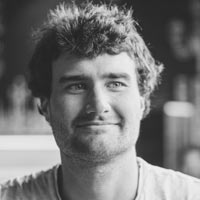
Felix Andreas Faber
2020 Foresight Fellow in Machine Learning accelerated Drug- and Materials discovery I received a B.Sc. and a M.Sc. in physics at Linköping University in Sweden, followed by a Ph.D. in chemistry at the University of Basel. My master’s thesis, which was later published in the International Journal of Quantum Chemistry, was one of the first works that demonstrated successful learning of crystal formation energies. In my Ph.D. I developed machine learning techniques for modeling fundamental quantum mechanical properties. Such properties include energies, forces, and dipole moments of crystals and molecules. In one of my first Ph.D. projects, which was published in Physical Review Letters, we used a machine learning model to predict formation energies of almost 2 million Elpasolite crystal structures. We also used this model to identify around 90 potentially thermodynamically stable structures.I was also among those who pioneered the use of quantum mechanical operators directly on machine learning models, which results in improved performance and is a stepping stone towards universal machine learning modeling of quantum mechanical properties. Additionally, I dedicated parts of my Ph.D. to benchmarking and comparing the performance of different machine learning models. In one such example we, in collaboration with scientists from google, performed one of the most comprehensive comparisons of different machine learning models to date. I envision a research framework where these techniques could be harnessed to understand and model biological and materials systems of varying complexity. Such fundamental models could be used to develop therapeutics, as well as new materials tailored for exhibiting specific properties. To those ends, I recently started a postdoctoral fellowship at the University of Cambridge, where applying the models that I developed during my Ph.D. to discover new drugs and materials.

Felix Andreas Faber
2020 Foresight Fellow in Machine Learning accelerated Drug- and Materials discovery I received a B.Sc. and a M.Sc. in physics at Linköping University in Sweden, followed by a Ph.D. in chemistry at the University of Basel. My master’s thesis, which was later published in the International Journal of Quantum Chemistry, was one of the first works that demonstrated successful learning of crystal formation energies. In my Ph.D. I developed machine learning techniques for modeling fundamental quantum mechanical properties. Such properties include energies, forces, and dipole moments of crystals and molecules. In one of my first Ph.D. projects, which was published in Physical Review Letters, we used a machine learning model to predict formation energies of almost 2 million Elpasolite crystal structures. We also used this model to identify around 90 potentially thermodynamically stable structures.I was also among those who pioneered the use of quantum mechanical operators directly on machine learning models, which results in improved performance and is a stepping stone towards universal machine learning modeling of quantum mechanical properties. Additionally, I dedicated parts of my Ph.D. to benchmarking and comparing the performance of different machine learning models. In one such example we, in collaboration with scientists from google, performed one of the most comprehensive comparisons of different machine learning models to date. I envision a research framework where these techniques could be harnessed to understand and model biological and materials systems of varying complexity. Such fundamental models could be used to develop therapeutics, as well as new materials tailored for exhibiting specific properties. To those ends, I recently started a postdoctoral fellowship at the University of Cambridge, where applying the models that I developed during my Ph.D. to discover new drugs and materials.



















